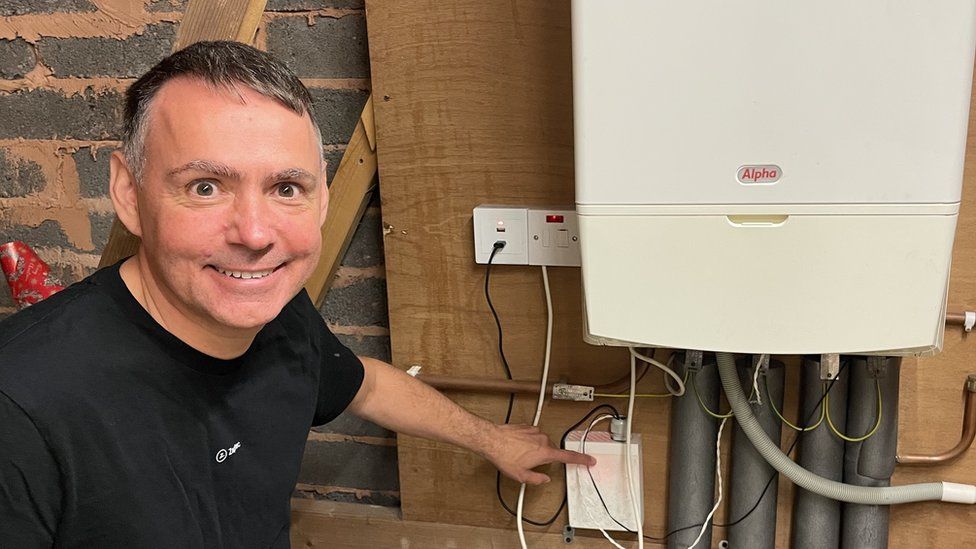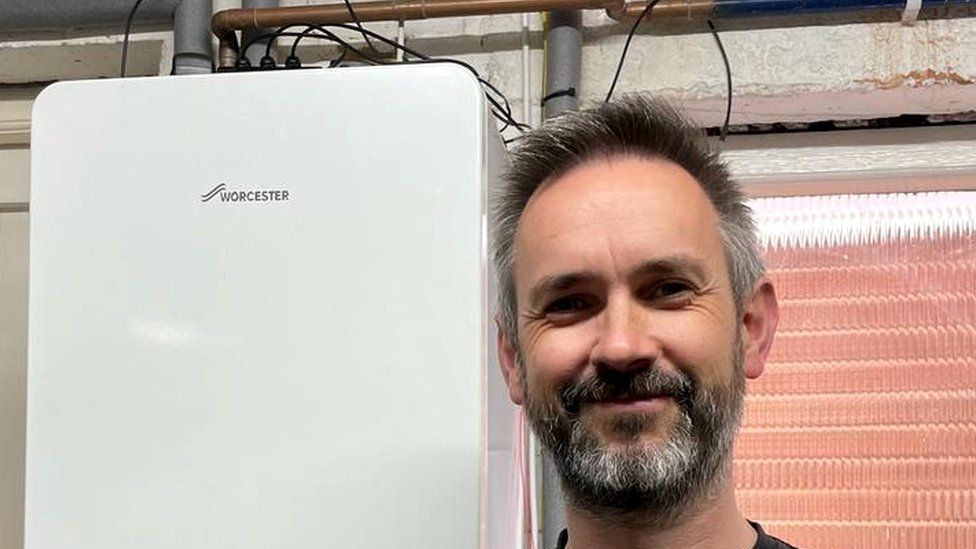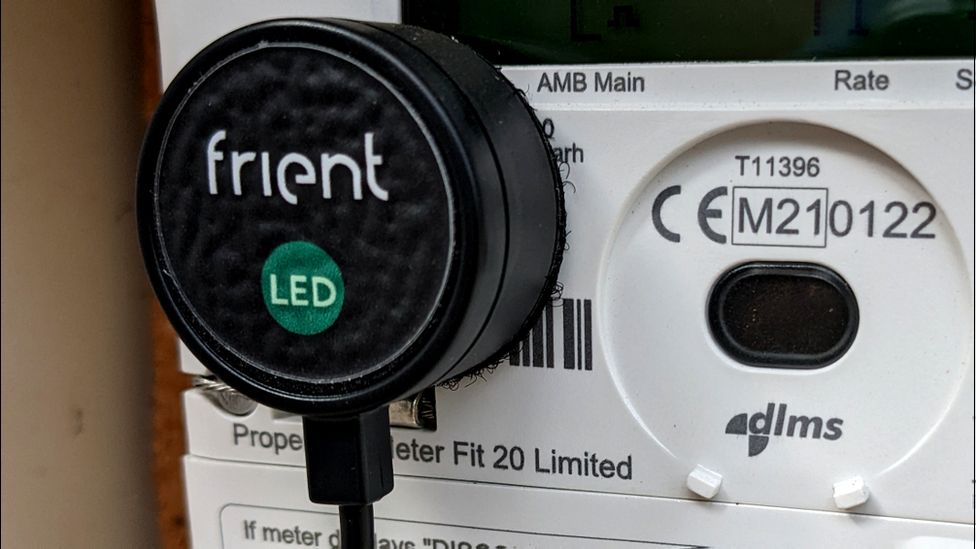The DIY gadgets that could keep your energy bill down

Hidden in an attic in Chester, a tiny computer constantly downloads local weather data from the internet and uses it to save a homeowner money.
The gadget, no more than a handful of circuit boards and wiring in a small plastic case, is connected to a gas boiler. When it’s warm outside, it turns the boiler flow temperature down as less energy is needed to heat the building. This is known as weather compensation.
“It’s been running for about eight months now and it works perfectly,” says Paul Pschierer-Barnfather, who built and installed the device himself. “I should have done this years ago.”
There are branded products that work in a similar way, or which measure the outside air temperature directly and adjust the temperature of water sent to radiators accordingly.
But Mr Pschierer-Barnfather, who works for an electric car charging firm and has some technical know-how, says making the device himself cost only about £15.
It’s a job that is probably best undertaken by someone who knows what they are doing.
Other techies have come up with gadgets and apps to help them reduce their bills and, given the soaring cost of energy at the moment, many are keen to share their experiences in the hope that they will benefit others.

Heating terms
- Flow temperature – the temperature of the water in the pipes that supply your radiators
- Condensing boiler – a boiler that uses the hot gases produced to further heat the water, instead of letting the heat escape through the flue
- Weather compensation – technology that adjusts the temperature of your central heating system to reflect the outside temperature and use less energy
- Combi boiler – provides both hot water and central heating from a single unit

Mr Pschierer-Barnfather’s project began after he read about how lowering the flow temperature on a condensing gas combi boiler can improve its efficiency.
The flow temperature is the temperature to which a combi heats the water before it circulates among radiators. Lower flow temperatures mean more hot water vapour condenses within the boiler as it operates, which retains heat.
“When I started turning the boiler down, it probably cut the gas consumption by about 10%,” says Mr Pschierer-Barnfather.
He found that on very cold days he felt he had to turn the boiler back up again slightly, however, and that’s when he decided to make a gadget to do this automatically.
The device keeps the radiator flow temperature between 30C and 50C, which he finds is sufficient.
This is different from altering the thermostat temperature and it is important to note that adjustments like this only apply to the radiator flow temperature on condensing gas combi boilers with separate hot water controls. Lowering the hot water temperature too much can allow the growth of bacteria, including legionella.

In the Midlands, programmer Tomás McGuinness has designed a different gizmo that uses sensors to read the flow temperatures on his boiler. It sends a notification to a smartphone app if the return flow rises above 55C, the approximate point at which the boiler would stop condensing. He can then fine-tune the temperature manually.
“My little sensor system, I could probably put it together for about a tenner,” he says. Via Twitter, he’s found several people who are willing to try prototypes of his device, which he says he might go on to produce for sale.
This and other measures, such as reducing his boiler’s power consumption and insulating his home, have helped him take control of his energy expenditure, he adds.
However, Mr McGuinness says he is still concerned about the continuing rise in bills.
Mr Pschierer-Barnfather agrees, adding that he feels “lucky” to have the skills required to reduce his gas bill slightly. He argues that fellow techies are in a position to help others shield themselves from energy price rises.
“For people who haven’t got double glazing or haven’t been able to do what I have with their boiler, they’re going to get the full whack of this.
“We can help. We’re a slightly geeky minority… I feel that there’s more that we can do.”
More efficient boilers should be the norm, he says.

Some installers don’t set boilers up to run as efficiently as they could, or explain things such as condensing and flow temperature to homeowners, says Jo Alsop, founder of independent consumer advice organisation The Heating Hub.
However, based on enquiries to The Heating Hub, people do seem to be increasingly interested in finding out how to maximise the efficiency of their home energy systems, she adds.
A spokesman for Home Assistant, a software tool for controlling smart home tech, tells the BBC that he has also noticed a rise in queries about setting up energy management systems.


Many people also monitor their home electricity demand closely. Glyn Hudson, co-founder of OpenEnergyMonitor, says it is possible to simply and safely attach a sensor to the cables exiting your electricity board and track energy consumption over time.
Dan Medhurst, who lives near Reading and who works in IT, has attached a sensor to the front of his electricity meter. It tracks the pulsing LED on the meter, which reveals how much power is flowing. The data is sent wirelessly to Home Assistant and he can check it at any time on his smartphone or computer.
It means Mr Medhurst can spot spikes in usage and, based on the time they occurred, can work out what appliances caused them. It made him realise just how much electricity his tumble dryer consumes, for example, and he also decided to turn his fridge temperature down, while still keeping the contents cold enough (5C or below).

The best recent example was the TV, however, he adds.
“I had the brightness and contrast turned up quite high… Just by turning it to eco mode the usage dropped from 100 watts down to 50 watts.”
The result of closer monitoring and more careful use of his appliances has resulted in a greater than 10% drop in his electricity bill, he estimates, though he adds that the continuing price rises remain daunting.
Although small adjustments to home energy use will not eliminate the pain of rapidly rising bills, there is still value in it, especially when thousands or millions of homes get involved, says Abigail Dombey, chair of Hydrogen Sussex, an energy industry body.
Lowering domestic gas consumption means more gas is available for gas-fired power stations, which could help avoid blackouts, she says, and at scale this could alleviate pressure on the European energy system as a whole. Plus, the less gas that is burned, the less CO2 gets emitted into the atmosphere.
“These are tiny actions that actually can make colossal differences,” she says.

